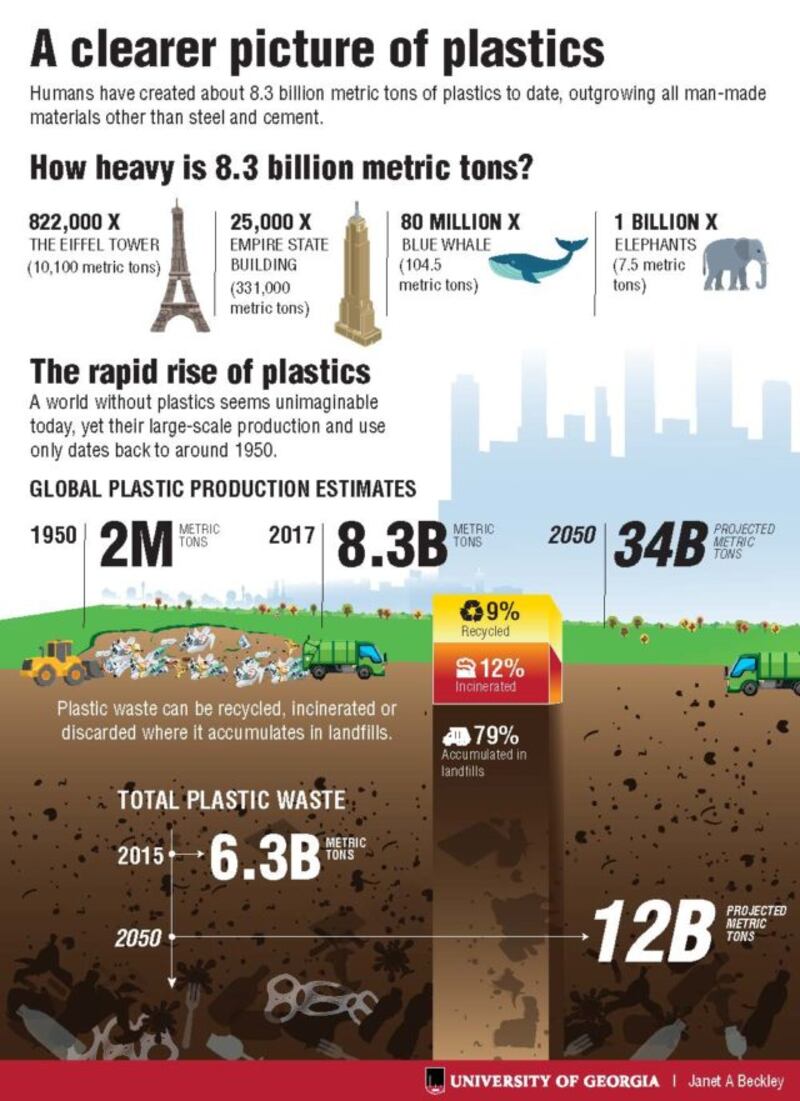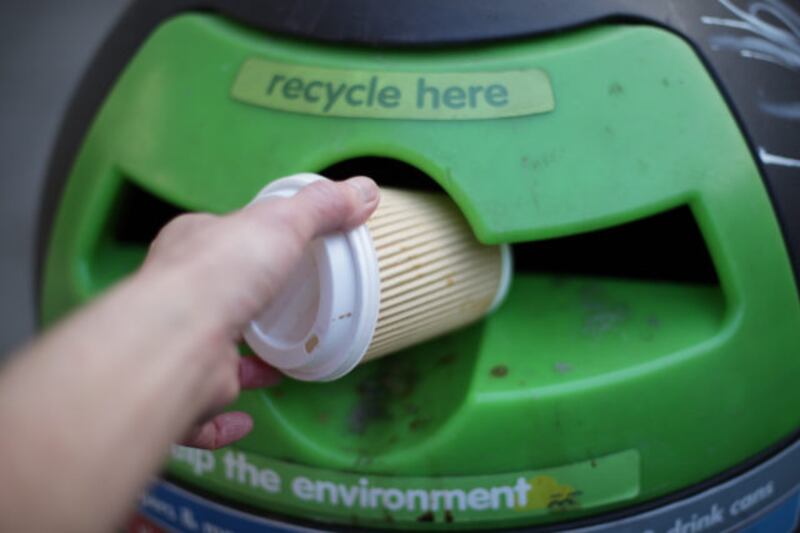More than eight billion tonnes of plastic has been produced since the early 1950s and most of it now lies buried in landfills or litters the oceans and countryside, scientists claim.
The US researchers conducted the world’s first analysis of the production, use and fate of plastic from the start of its large-scale manufacture.

They found that by 2015, humans had generated 8.3 billion tonnes of the material, 6.3 billion tonnes of which had already become waste.
Of all the waste plastic, only 9% had been recycled and 12% incinerated, while 79% had accumulated in landfills or the natural environment.
If current trends continue, roughly 12 billion tonnes of plastic waste will be discarded in landfills or polluting the Earth’s surface by 2050, said the team, writing in the journal Science Advances.
Putting the amount in proportion, 12 billion tonnes is about 35,000 times heavier than the Empire State Building in New York.
Co-author Dr Jenna Jambeck, from the University of Georgia, said: “Most plastics don’t biodegrade in any meaningful sense, so the plastic waste humans have generated could be with us for hundreds or even thousands of years.
“Our estimates underscore the need to think critically about the materials we use and our waste management practices.”
The scientists compiled production statistics for resins, fibres and additives from a range of industry sources.

They found that annual global production of plastics increased from two million tonnes in 1950 to more than 400 million in 2015. The researchers drew a sharp distinction between plastics and materials used extensively in construction, such as steel and cement.
Study leader Dr Roland Geyer, from the University of California at Santa Barbara, said: “Roughly half of all the steel we make goes into construction, so it will have decades of use. Plastic is the opposite – half of all plastics become waste after four or fewer years of use.”
Of the total amount of plastic produced from 1950 to 2015, roughly half was manufactured in just the last 13 years.
Dr Geyer added: “What we are trying to do is to create the foundation for sustainable materials management. Put simply, you can’t manage what you don’t measure, and so we think policy discussions will be more informed and fact based now that we have these numbers.”








